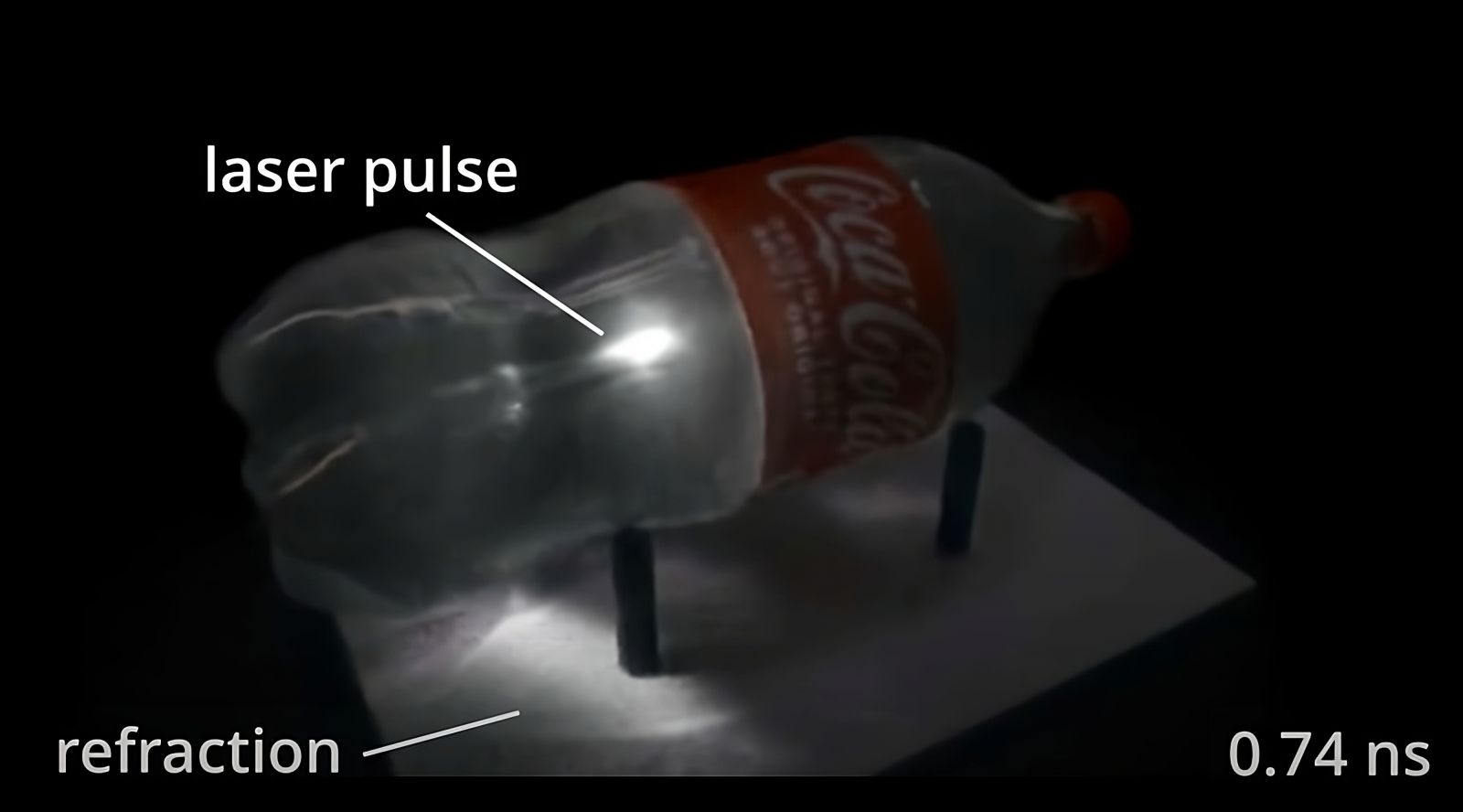Follow us on Google News (click on ☆)

A beam of light captured in motion, revealing its path in a simulated scene.
Credit: University of Toronto
This achievement is based on an ultra-fast camera and an artificial intelligence algorithm. Together, they allow light to be visualized from various angles, as if one could "follow" its trajectory. A technology that transforms the invisible into the visible, paving the way for unprecedented applications.
David Lindell, a professor at the University of Toronto, explains that their technology makes phenomena accessible that are impossible to see with the naked eye. By virtually slowing down light, they reveal how it moves, reflects, or scatters in its environment. A striking example is light passing through a liquid, an effect now made "visible" with unparalleled precision.
The algorithm employed relies on a concept called "novel view synthesis." This method enables the recreation of a scene from multiple perspectives, even for images captured at speeds equivalent to that of light. It is a first in this field.
This advancement is not limited to fundamental science. It could impact practical technologies like LIDAR sensors used in autonomous vehicles. With this technology, it could become possible to detect obstacles, improve 3D imaging, or analyze materials with enhanced precision.
Credit: University of Toronto
The researchers have also explored phenomena predicted by Einstein, such as the "spotlight" effect, where an object appears brighter as it approaches. They also visualized "length contraction," which makes objects appear shorter when moving at very high speeds.
Beyond practical applications, this technique is inspiring other fields. In art and cinema, it could lead to spectacular visual effects and novel immersive experiences. It is also a powerful educational tool, allowing the physics of light to be explained intuitively.
In the future, researchers hope to use their technology to reconstruct 3D models of objects or entire environments simply by observing the light interacting with them.